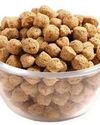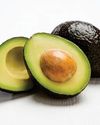
Its ability to provide rapid, non-destructive, and accurate analysis of food products makes it invaluable for ensuring quality, safety, and efficiency in food production and processing. This article explores the principles of NIR spectroscopy, its applications in the food industry, and the benefits and challenges associated with its use.
Principles of NIR Spectroscopy
NIR spectroscopy operates in the wavelength range of 780 nm to 2500 nm, a region that lies between the visible and mid-infrared regions of the electromagnetic spectrum. In this range, molecular overtones and combinations of fundamental vibrations absorb light, providing a unique spectral fingerprint for different materials. When NIR light interacts with a sample, some of it is absorbed while the rest is reflected or transmitted. The absorption pattern is characteristic of the molecular composition of the sample, allowing for qualitative and quantitative analysis.
The key components of an NIR spectroscopic system include a light source, a sample holder, a monochromator or interferometer, and a detector. The light source emits NIR radiation that passes through or reflects off the sample. The monochromator disperses the light into its component wavelengths, and the detector measures the intensity of the transmitted or reflected light. The resulting spectrum is analyzed to determine the sample's composition.
Applications in Food Analysis
NIR spectroscopy has a wide range of applications in the food industry, from raw material inspection to final product quality control. Its versatility and speed make it suitable for various stages of food production.
Cereal and Cereal Products
Denne historien er fra JUNE - 2024-utgaven av Food & Beverages Processing.
Start din 7-dagers gratis prøveperiode på Magzter GOLD for å få tilgang til tusenvis av utvalgte premiumhistorier og 9000+ magasiner og aviser.
Allerede abonnent ? Logg på
Denne historien er fra JUNE - 2024-utgaven av Food & Beverages Processing.
Start din 7-dagers gratis prøveperiode på Magzter GOLD for å få tilgang til tusenvis av utvalgte premiumhistorier og 9000+ magasiner og aviser.
Allerede abonnent? Logg på

Therapeutic Use Of Indian Winter Cherry (Ashwagandha)
Ashwagandha is one of the most important herbs in Ayurveda, which is a traditional form of alternative medicine based on Indian principles of natural healing. Ashwagandha is a small, woody shrub in the Solanaceae family that grows about two feet in height.

The Dairy Chain Revolution: Ensuring Freshness and Efficiency
Dairy products are an integral part of the food processing industry, forming milk, cheese, yogurt, and butter are highly perishable and demand meticulous care to preserve their quality and safety throughout their journey from farm to consumer.

Plant-Based Proteins from Soybean: A Comprehensive Exploration
Introduction - In recent years, the global food landscape has witnessed a remarkable shift toward plant-based diets, driven by a growing awareness of health, environmental sustainability, and ethical considerations.

Avocado: The Green Ally in the Fight Against Diabetes
In a world inundated with processed foods laden with excessive sugars, salts, and artificial additives, rates of diabetes across the world have been rising over the past decades link.

Inspection Technology from KHS: Precision and early detection for holistic line thinking
KHS GmbH continuously develops and modernizes its inspection technology.

Packaging for the Future: How Aseptic Solutions are Transforming the Dairy Industry
Introduction - The Dairy Aseptic Packaging Market T is a dynamic and transformative sector within the rapidly evolving food and beverage industry.

Sidel introduces its breakthrough bottle washer with powerful dual technology - Hydra Ultrasonic
With beverage bottlers requiring a solution that reduces production costs while improving their environmental footprint, Sidel has launched its new bottle washer which combines chemical and ultrasound technology for the highest performance. Sidel will unveil Hydra Ultrasonic for the first time at the international trade show, BrauBeviale.

Revolutionizing Dairy Packaging: Technology & Innovations Shaping the Future
Dairy packaging plays a vital role in maintaining the quality and safety of a wide variety of products, including milk, butter, cheese, and yogurt.

Proost: Brewing Passion, Driving Innovation, Redefining Quality
In an exclusive conversation Mr. Tarun Bhargava, Co-Founder & CEO of Proost, speaks about the brand's inspiring journey, its unique approach to brewing, and the innovative strategies driving its success. From Proost's commitment to quality and sustainability to its adaptability in a dynamic market, Tarun shares insights into what makes Proost a standout in the beverage industry.

Non-Alcoholic Beverages: A Booming Industry Across Global Markets
The global non-alcoholic beverage market has been expanding steadily, with an estimated value of over USD 1 trillion as of 2023. This growth is expected to continue, fueled by a shift in consumer preferences toward healthier and more mindful consumption habits. The market encompasses a variety of products, including non-alcoholic beers, soft drinks, juices, and functional beverages like energy drinks and flavored waters.